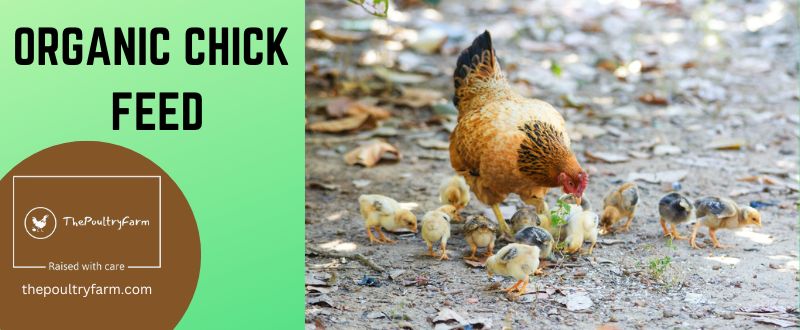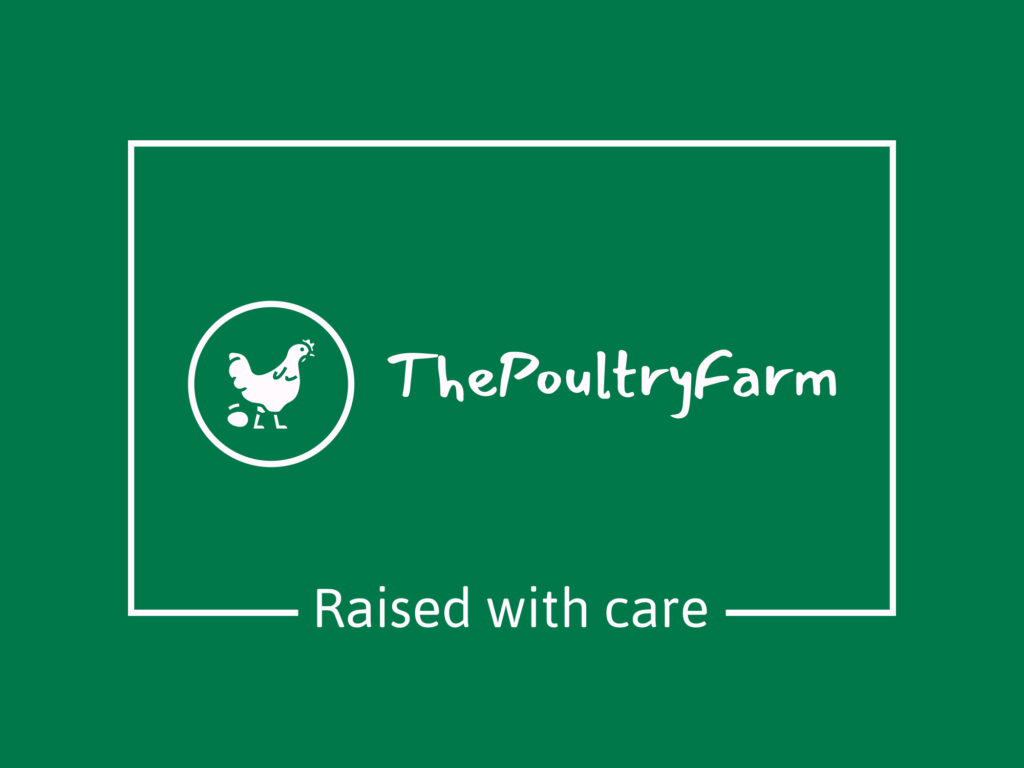
Introduction
Organic chick feed is a type of feed that contains natural, organic ingredients and does not contain any synthetic additives or genetically modified organisms (GMOs). Using sustainable farming practices it gets ready, and is often free from pesticides and other chemicals. Organic chicken feed can provide a healthy and nutritious diet for your chickens, helping them to produce eggs with a higher nutrient content and better flavor. It can also be beneficial for the environment, as organic farming practices help to preserve soil health and biodiversity.
Chicken feeds are a mixture of seeds, grains, and other ingredients that chickens eat to provide them with the nutrients they need. Chicken feed typically includes corn, soybeans, oats, and wheat. Chicken feed can also include other ingredients such as limestone, oyster shell grit, and vitamins and minerals.
Types of Organic Chick Feed
There are several types of organic chicken feed available on the market, including:
- Grains: Grains such as corn, oats, and wheat are organic chicken feed as a source of carbohydrates and protein.
- Legumes: Legumes such as soybeans, peas, and beans are high in protein are also organic chicken feed.
- Seeds: Seeds such as flax, sunflower, and sesame are chicken feed as a source of healthy fats and protein.
- Greens: Fresh greens such as lettuce, spinach, and kale can be fed to chickens as a supplement to their diet.
- Supplements: Some organic chicken feeds may also contain supplements such as probiotics, enzymes, and minerals to support the health and well-being of the chickens.
Unmedicated Vs Medicated
A medicated feed for chickens is popular in both breeds, grower, and starter because it’s a simple method to prevent Coccidiosis as well as other fowl diseases within your flock. The medicated feed contains amprolium, a chemical that keeps your chickens safe from harmful and deadly illnesses that they could contract when they are young. you should not feed them the medicated feed when your chooks are vaccinated, since the effects of amprolium do not match with the vaccine.
Other types of Chick Feed
there are several other types of chicken feed available on the market, including:
Chick Starter
It is a protein-rich type of chicken feed that meets the dietary needs of newly hatched chicks. Most baby chicks can survive on a diet of water and starter feed for the first 6 weeks of life before transitioning to grower feed. The high protein content (usually 20-24%) helps young chicks grow into strong pullets. However, it is important to switch from starter feed after 6 weeks old to prevent excess protein from damaging the liver.
Starter/grower feed, which is the type of feed chickens can consume between 1 and 20 weeks old. Be sure to check the label and talk to the closest poultry expert in case you are unsure.
Grower Feed
Grower feed is similar to the feed used for teenage chickens. The diet requirements for chickens between 6 and 20 weeks old are different from those of baby chicks. Grower feed has a protein content of 16-18% and less calcium than conventional layer feed. It helps support the development of teenage chickens without providing unnecessary vitamins or minerals that are better suited for adult layers. When your chickens start laying eggs, it’s a sign that they’re ready to switch to layer feed.
Layer Feed
For the majority of your flock’s time, the diet they consume will largely consist of delicious layer feed. Layer feed is a clever mix of calcium, protein as well as other minerals and vitamins that help to boost egg-laying capabilities in your flock. Protein-wise layer feed is similar in amounts of protein as grower feed, which is around 16-18%. However, it includes an extra amount of calcium to ensure eggs are clean and clean. Feeding feed for layers to babies’ little pullets and chicks is not a good idea as it will not satisfy their specific nutritional requirements. Layer feed should be only fed to chickens when they are around 20 weeks old or when they are beginning to lay eggs.
Broiler Feed
The various stages of feeding we’ve examined up to now don’t always pertain to broilers. This is due to the fact that broilers are specially bred to get as large as quickly as is possible. There are many health issues because of their rapid growth, but they aren’t intended to live for very long enough in the first. The majority of broilers are processed to get their meat between 7 and 9 weeks old.
The majority of chicken feed made for broiler chickens is extraordinarily rich in protein, typically about 25 to 25 %. This helps them grow rapidly and develop a lot of muscle which results in high meat yields.
The rapid growth rate and high levels of protein could cause strain on the chicken’s organs, heart as well as legs. A lot of broiler chickens develop so fast that they’re unable to move quickly.
The health of these birds is vital, however, since you’d like them to live until they reach a suitable butchering age and yield high-quality meat. Some farmers start broiler chicks by feeding them an all-purpose broiler feed since it contains the same amount of protein as chick starters. It’s not a good choice, however, since the feed isn’t medicated.
Chick starters can be fed to broiler chicks until they reach four weeks old. Then, they can be changed to a feed designed for broilers. Although the protein levels are comparable, the feed will also contain additional vitamins and minerals that adult broilers require as they develop.
Flock Raiser
Flock raiser is a broad feed that can meet the all the nutritional requirements. This kind of chicken feed is typically used when you’re not raising chickens specifically for a use. Chickens that lay eggs, broiler chickens as well as breeds for show are all required to receive specialized feed when they reach the age of the point of maturity. We’ll look more closely at these kinds of feed in the following sections.
If you’re raising a bird flock to help with pest control, company or natural mowing or other reasons that are not specifically related then flock raiser is the best feed for you. You may also benefit from this feed in the case of mixed flocks of ducks, roosters and various birds with various ages.
Game Bird Feed
The type of feed used by chickens is generally fed to birds that show. It also has proteins that are high in order to ensure quick, healthy growth as well as shiny feathers. The protein content in the feed for show chickens won’t be the same than broiler feed and don’t contain the same amount of calcium as layer feed.
Show birds feed made of chicken is typically a premium expensive feed that may include special ingredients. The ingredients typically comprise black oil sunflower seeds organic vegetables such as alfalfa and peas, as well as some even include cricket meals. Show birds do not typically hunt in search of food since this could increase the risk of injury.
This is why their food must include various ingredients that are similar to what they normally see in the natural world. Game bird feed is also a source of various minerals and vitamins that aid in enhancing the appearance of the bird. This includes things like pigmentation and thickness, comb , shape of the wattle, as well as size, size, and the height of the bird’s height, shape, and size.
Game chicken feed can be fed to birds that are older or that are in poor health, particularly in winter. The high-quality feed as well as the specific ingredients can aid in boosting the health of aging chickens. But, because of the price, you will not be able to afford it as your primary feed for your entire flock.
Shell Grit
Many first-time poultry owners don’t realize the significance of shell grit to their poultry’s diet. Shell grit serves two main purposes. First, it is an excellent calcium-rich food that aids your girls create delicious eggs that have robust and strong shells.
Second, chickens store shell grit inside their gizzards. This aids in pulverizing their feed to digest their food easily. All mature chickens require shell grit as part of their diet and it is best served as separate dishes in conjunction with their normal food source of laying. Chickens can manage their calcium intake, so don’t stress about portions too much. many girls will be capable of determining whether they’ve consumed enough.
Mash
Mash, as the name suggests, is a fresh and unprocessed form of chicken feed. Much like how potting soil looks, the mash is the best type of chicken feed currently available. Mash is usually fed to young chickens because it is simple to digest, however, it is not unusual for fully mature chickens to be fed the mash. Certain Chicken Ladies or Lads blend mash and hot water to produce porridge-like consistency which your flock will want to consume. Be aware of the possibility that using this technique could result in the feed going to waste quicker.
The primary problem with mash-based varieties that chicken feed comes from the fact that their texture is often a cause for an increase in waste from incidental sources. Keep this in your mind.
Crumble
In simple terms, crumble is a coarse form of mash that isn’t so compact like pellets. It has a texture similar to that of oatmeal, it is a semi-loose type of chicken feed that’s slightly more manageable than Mash. Many chicken enthusiasts use crumble to make a bridge between pellets and mash for their flock.
Others say that their chicks like the texture of crumble. Whatever your reason for choosing crumble as an alternative to pellets or mash at the end of the day, it shouldn’t cause a significant difference to the health of your family members.
Pellets
Pellets are possibly the most popular type of chicken feed that is available. As they sound, pellets are basically small round cylinders that are full of delicious chicken feed. One advantage of using pellets is the fact that they are able to hold their shape well and remains strong when your chickens accidentally smash your food dish over. It is easy to handle, store as well, they typically are the first choice of the majority of backyard chicken owners.
Chicken Scratch
Chicken scratch isn’t like chicken feed. Imagine scratching chickens as a type of treatment for your chickens. The majority of chicken scratch types consist mostly of corn that has been cracked as well as different grains that chickens like to eat but are not great for their stomachs. Chicken scratch is an excellent fuel source for the flock. It will help to keep their stomachs warm or cold winter evenings.
Be aware that scratching your chicken is not the sole ingredient in a healthy diet. It is delicious food that all chooks should relish every now and again.
Fermented Feed
Fermenting your chicken’s feed is an easy method to boost the amount of enzyme and vitamin of their feed in addition to making it more digestible for your chickens, as well as neutralizing the effects of the toxicity. Another advantage of feed that is fermented is due to its density, it makes the chickens feel fuller for longer. So, the cost of feeding chickens will go down and your chickens are also likely to have fewer droppings to clean.
Summary
There are many different kinds of chicken feed available to pick from. At different times in their life, chickens generally require different kinds of food.
You should also choose your feed based on the reason the reason you’re keeping your poultry. Layers, boilers, as well as show chickens all require different specifications. Make sure you consider all of these when choosing the best diet for the flock.

I am passionate about chickens and how best to raise a healthy flock. I have been raising chickens for over 10 years now, and I am always looking for new and innovative ways to keep my chickens happy and healthy. In addition to keeping my own flock, I also putting reviews on the essential products that are required to keep Chicken happy. I hope to help as many people as possible learn how to properly care for their chickens!
Leave a Reply
